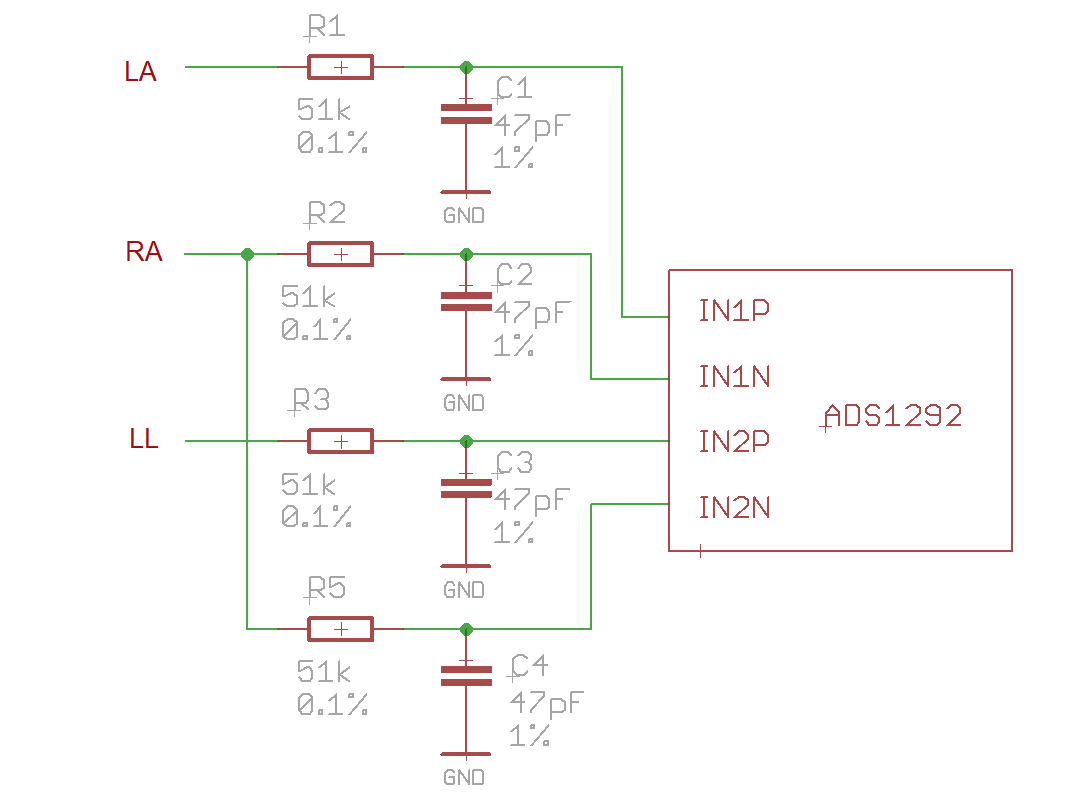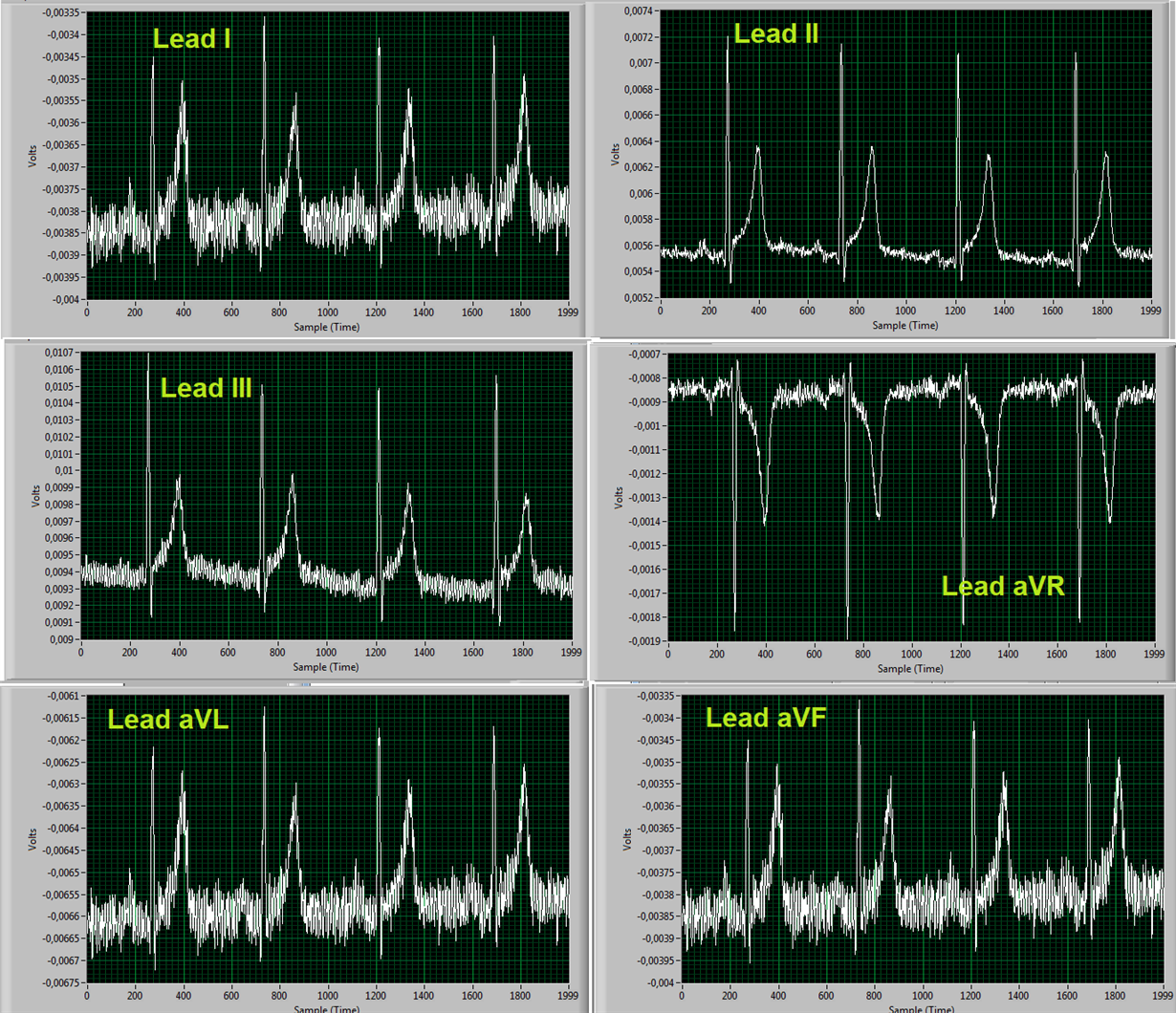Other Parts Discussed in Thread: ADS1292
Hi,
I am working on a ADS1292ECG-FE and I am trying to increase the quality of the ECG measurements. The measuring chain is as follows :
The resistors and capacitors have been choosen with high tolerance to minimize electrodes mismatch. I am using the RLD electrode.
I am working on a laptop with Windows XP, it is running on battery and it is far from the 50 Hz, so there should not be any problem regarding the 50 Hz noise.
I am using wet electrodes.
Here are my raw measurements :
Is it normal to get this level of ECG quality ? I find it to be bad, but I do not know if it is the supposed behavior. In the user guide of the ADS1292ECG-FE, the ECG which are displayed (pages 21, 23 and 25) are really good, and it seems like there is no filtering applied.
I know I will certainly have to filter the signals to get better results but I was expecting the raw data to be better, simple low-pass filter still do not give great results, as you can see here :
Thank you for your support.




